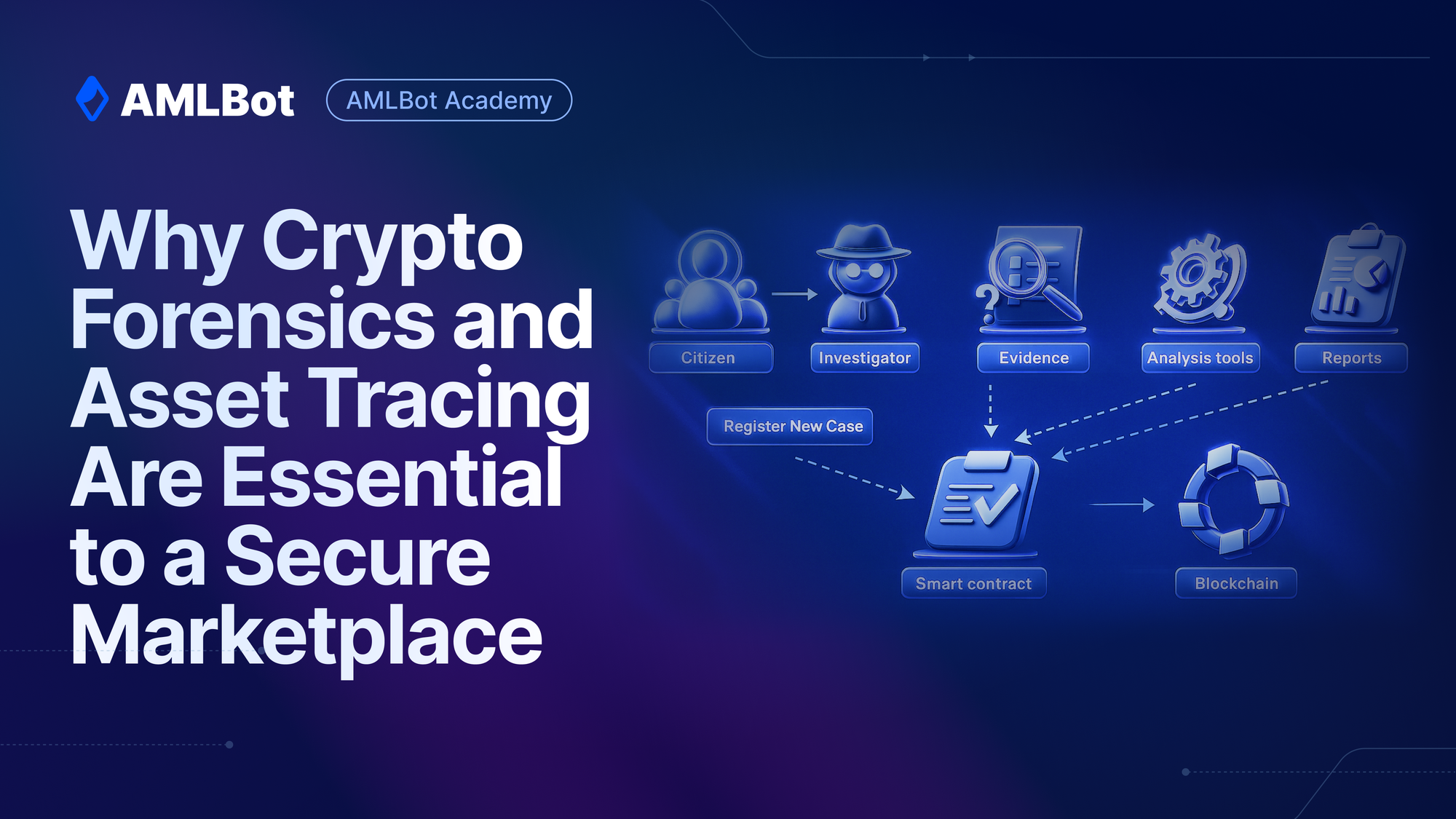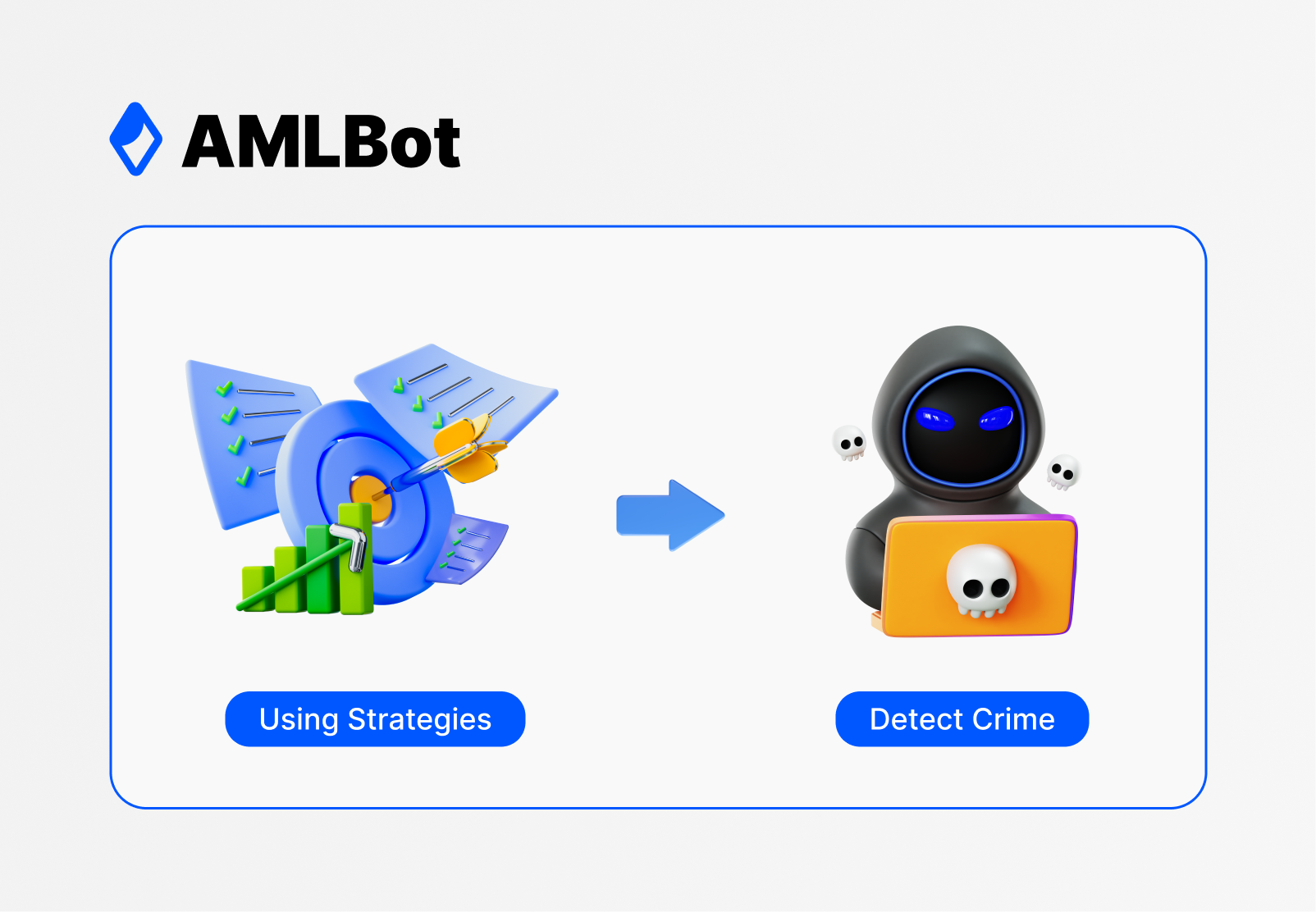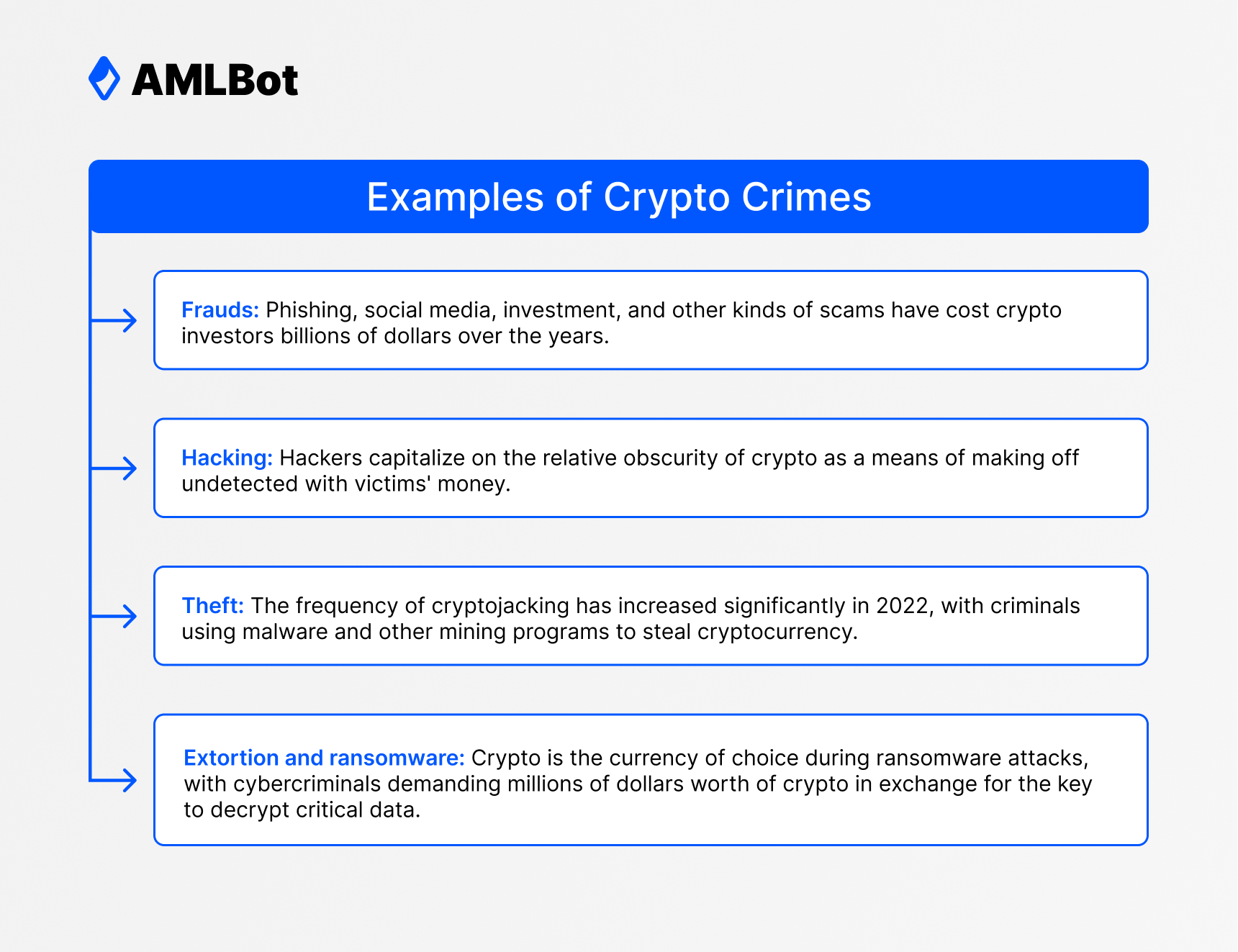Why Crypto Forensics and Asset Tracing Are Essential to a Secure Marketplace

Potential crypto investors who are concerned about risking their funds in an unregulated marketplace should take heart in the advancement of crypto forensics. In recent years, the use of blockchain forensics tools has proven extremely effective at crypto asset recovery. This is a critical step toward establishing a more secure crypto market, which is to the benefit of everyone involved, from business owners to investigators to investors.
While the average crypto investor doesn't need to have detailed knowledge of the mechanics of a crypto investigation, it's important to have a general understanding of the process. Read on to learn how crypto forensics works, why it matters, and the role that it can play in protecting your crypto investment.
What Is Crypto Forensics?

Taking apart the phrase "crypto forensics" is a good first step toward understanding it. Crypto is a digital currency that is recorded using blockchain technology, an immutable ledger that is fully available to the public. Forensics is the use of scientific tests or strategies to detect crime. Putting these two terms together paints a clear picture of crypto forensics. When bad actors commit crimes like fraud involving crypto assets, investigators use special tools or methods to identify the parties involved and recover lost funds.
Just as a criminal examiner would dust for fingerprints to try to identify the perpetrator of a bank robbery, crypto forensic specialists can use digital tracing techniques to identify individuals who have committed crimes related to cryptocurrency. This makes it possible to not only press criminal charges against the suspects but also to recover cryptocurrency assets and return them to the victims.
Why Are Crypto and Cyber Forensics Necessary?
Crypto forensics is an important part of the process of investigating crimes and recovering funds. Because crypto is not subject to the same regulations as other currencies like the United States dollar, investors are vulnerable to exploitation. Crypto investors can fall victim to crimes including:
- Fraud: Phishing, social media, investment, and other kinds of scams have cost crypto investors billions of dollars over the years.
- Hacking: Hackers capitalize on the relative obscurity of crypto as a means of making off undetected with victims' money.
- Theft: The frequency of cryptojacking has increased significantly in 2022, with criminals using malware and other mining programs to steal cryptocurrency.
- Extortion and ransomware: Crypto is the currency of choice during ransomware attacks, with cybercriminals demanding millions of dollars worth of crypto in exchange for the key to decrypt critical data.

As the market has become more mainstream, crypto forensics has served as a balance against the pseudonymity of the service. Crypto forensics is important not only as a means of identifying and pursuing bad actors but also as a form of legal evidence. The detailed reports generated during the process of asset tracing are a crucial means of resolving disputes, offering financial restitution during civil lawsuits, successfully pursuing criminal prosecutions, and actively enforcing regulations.
How do Cryptocurrency Forensics and Investigations Work?
Many people assume that cryptocurrency transactions are truly anonymous and impossible to track. In reality, crypto experts can use forensic tools to trace the movement of cryptocurrency funds to public addresses. While these addresses do not generally include personally identifying information, they may be attached to an exchange or other service that can help determine the legal identities of the people involved in the transaction.
Traceable Information
Cryptocurrency transactions are publicly recorded on a blockchain using cryptocurrency addresses, which are just long strings of letters and numbers. These addresses do not include physical locations, legal names, or other identifying details. However, crypto forensic specialists like those at AMLBot can use blockchain intelligence tools and methods to trace and analyze certain types of data, including:
- Transactions: Forensic experts can convert transactional data into visual maps and flowcharts, which help them to trace transfers from their origins to their endpoints and identify patterns.
- Clusters: Investigators can identify groups of cryptocurrency addresses that are controlled by a single person or organization, which can help expand the scope of an investigation.
- Value: Analysts can examine the current and historical value of any cryptocurrency funds, and addresses with especially high valuations may warrant further attention.
With this information in hand, investigators can begin to compile evidence of fraudulent activity, which in turn enables them to seek new avenues for pursuing data, such as criminal warrants.
The Importance of Know Your Customer Checks
Crypto transactions in and of themselves do not offer a lot of information to investigators. Two parties can transfer currency without revealing any personal information. However, using that crypto in the real world requires converting it into a different currency, like the dollar, and this conversion process creates a paper trail.
Converting crypto to a different currency requires the use of an exchange, money transfer service, or bank, and these entities generally use Know Your Custom (KYC) rules. KYC checks require customers to provide identifying information, such as a full name and physical address. Individuals who are unwilling to provide identity verification cannot use the service. Thus, when investigators attempt to identify bad actors, exchanges are often a key source of information because they connect legal identities with otherwise anonymous transactions.
The Steps of a Crypto Forensic Investigation
The exact procedure for tracing assets differs based on the specific circumstances of the case, but, in general, most investigators follow a fairly standard process. The steps of a crypto investigation typically include:
- Establish a narrative: Forensic examiners begin by constructing a narrative and timeline of the events involved in the loss of assets. They review the details of the parties who participated (if they're known) and identify relevant cryptocurrency transactions.
- Trace transactions: Next, investigators use blockchain tracing tools to track the transactions in question. If a perpetrator used a crypto exchange at some point, it likely has some form of identifying data.
- Pinpoint patterns: Forensic investigators look for transaction patterns and attempt to identify interconnected addresses that are under common control.
- Analyze data: In some cases, investigators may also conduct analysis of other types of data, such as email metadata, domain servers, and IP address geolocation.
- Conduct due diligence: When the identities of the principal perpetrators become clear, investigators can use business records, financial records, and court filings to determine whether they have a criminal history, financial liabilities, or any connection to other cases of fraud.
- Legal documentation: If a civil or criminal case is involved, subpoenas or warrants may be issued to help identify bad actors and obtain necessary evidence.

These investigations can take months or years in complex cases, as investigators sort through extensive lists of cryptocurrency transactions in search of patterns and indicators of suspicious activity.
Is Crypto Forensics Effective?
Just as in other types of investigations, not every crypto forensics case will be a success story. Recent history has proven, however, that digital forensic tools are a valid and legitimate means of recovering stolen funds.
Colonial Pipeline Ransom Recovery
The ransomware attack on Colonial Pipeline caused gas shortages and panic on the east coast of the United States. In an effort to restore service as quickly as possible, Colonial made a substantial cryptocurrency ransom payment to the ransomware gang known as Darkside. It was only through crypto forensic technology and techniques that any of the funds were recovered.
The United States Department of Justice revealed in June 2021 that it had successfully seized $2.3 million of the cryptocurrency Colonial paid to Darkside. Examiners at the Federal Bureau of Investigation (FBI) used crypto forensic techniques to trace the extorted crypto assets to their final destination and recover them.
Arrest in Bitfinex Case
In February 2022, the United States Department of Justice announced that it had arrested two individuals in connection to a years-old case of cryptocurrency theft. In addition to arresting Ilya Lichtenstein and Heather Morgan, the department also seized a staggering $3.6 billion in stolen cryptocurrency that they had successfully traced to a 2016 hack of the virtual currency exchange Bitifinex.
Lichtenstein and Morgan were accused of attempting to launder the cryptocurrency over a period of years. Their capture was the result of a lengthy crypto forensic investigation by the FBI and Internal Revenue Service (IRS).
What Tools Are Available for Crypto Asset Tracing?
Individuals and businesses who fall prey to crypto-extortion, fraud, hacking, or theft don't have to simply accept that their funds are gone. Instead, you can make use of valuable tools that help trace and recover your lost assets. AMLBot has a team of crypto experts who can assist with recovering your stolen crypto. The analysts at AMLBot will provide you with a detailed report and help you to make contact with the proper authorities so that your crypto can be restored as quickly as possible. If your crypto assets have been exploited, contact the team at AMLBot to begin an investigation.